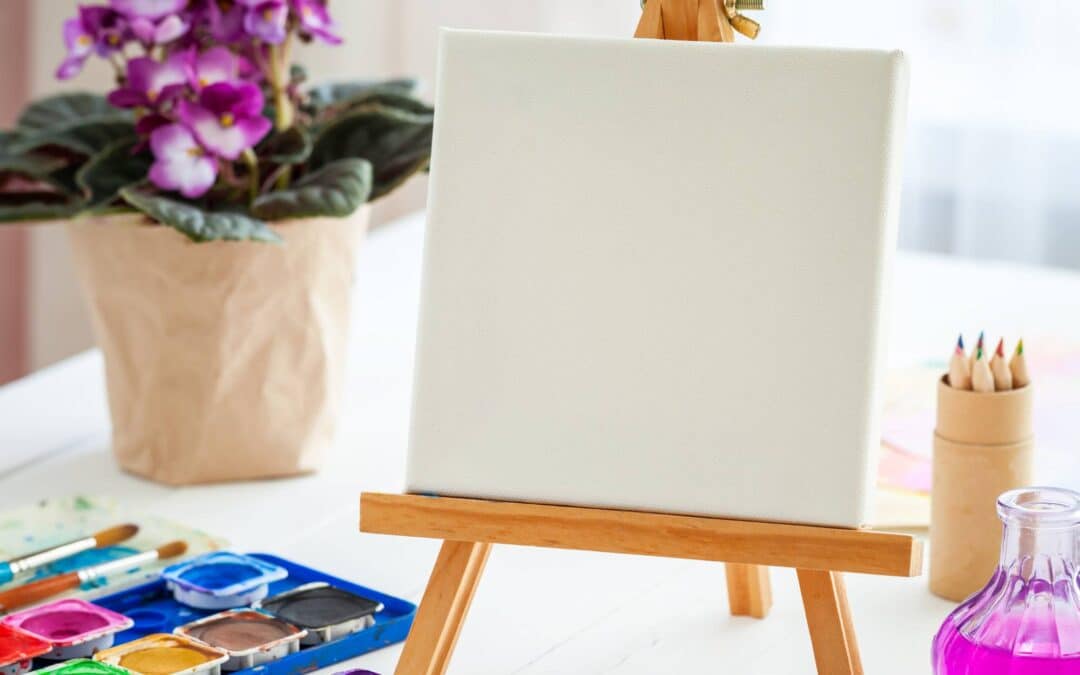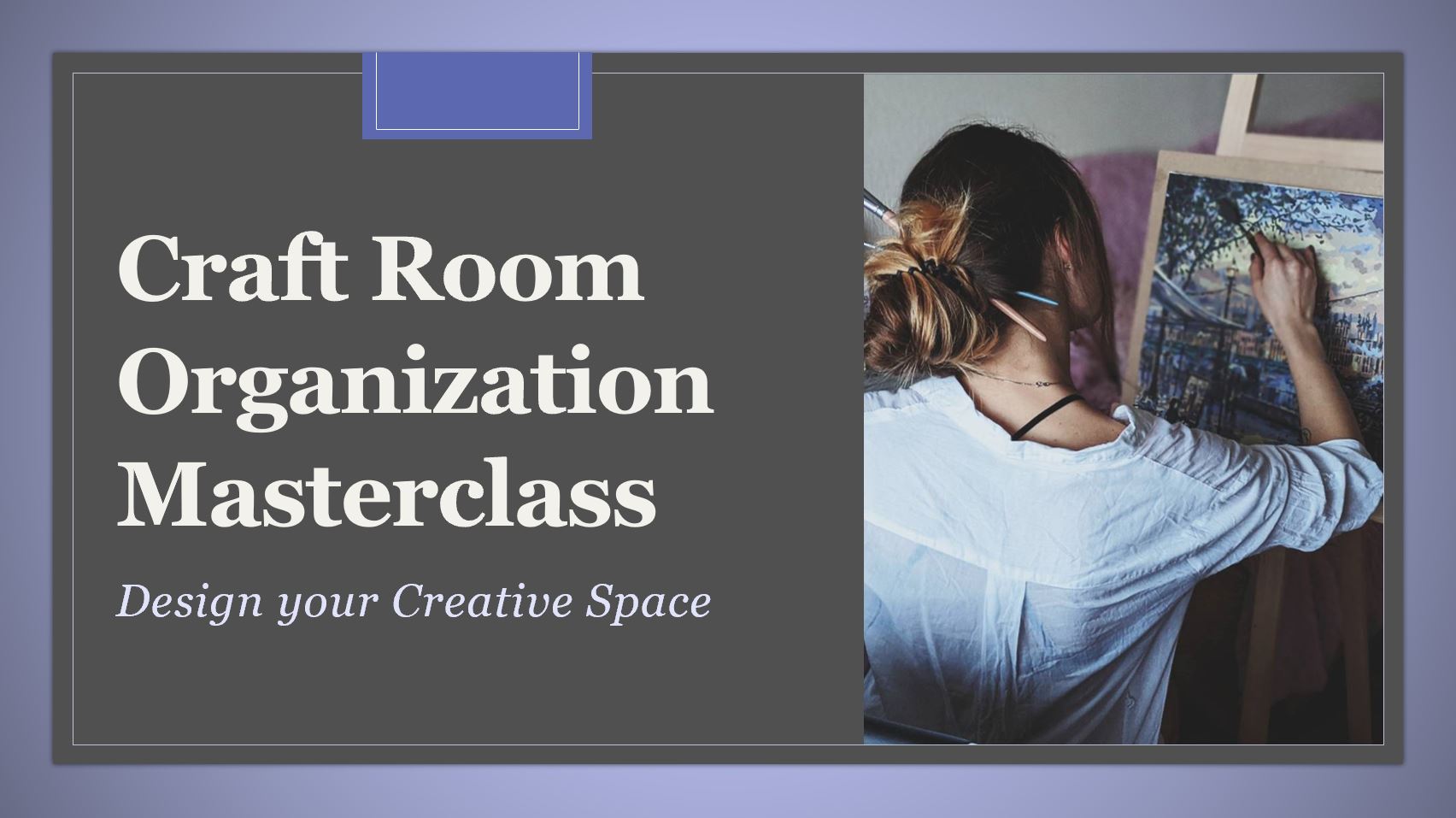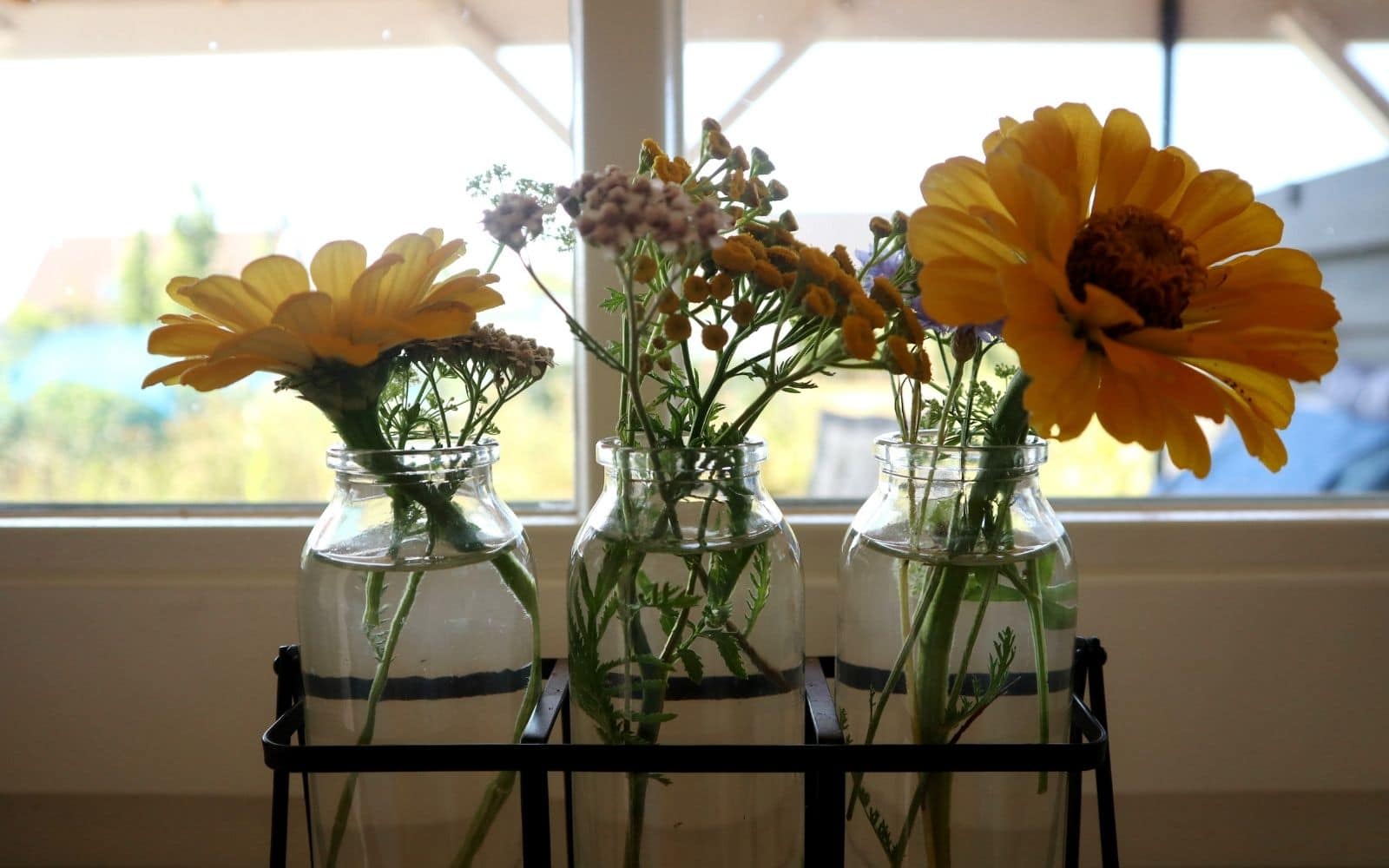Stepping into the vibrant world of crafting is invigorating, but as any creative enthusiast knows, maintaining an organized craft room can sometimes feel like a daunting task. Fear not! Discover a variety of effortless craft room organization ideas that will revolutionize the way you declutter and optimize your creative space. From clever storage solutions to innovative DIY organizers, this article unveils practical and stylish methods to keep your craft materials tidy and easily accessible.
Incorporating smart organization techniques not only enhances the aesthetics of your craft room but also elevates your productivity and creativity. Say goodbye to the frustration of misplaced supplies and the chaos of cluttered workstations—our expert advice will empower you to curate a space that sparks joy and ignites your imagination.
Whether you’re a seasoned crafter or just diving into the world of DIY projects, these organization hacks are designed to cater to your specific needs and inspire a sense of harmony within your crafting oasis. Let’s embark on a journey to transform your creative haven into an organized sanctuary that fuels your passion for crafting.
The Importance of an Organized Craft Room
Crafting is a delightful and therapeutic activity, but without proper organization, it can quickly lead to chaos. An organized craft room is not just visually appealing; it also creates a conducive environment for creativity to flourish. Imagine walking into a space where every material has its place, and inspiration flows effortlessly. A well-organized craft room reduces stress, saves time, and allows you to focus on the joy of creating rather than searching for supplies. It’s a game-changer for any crafting enthusiast, whether you’re into sewing, scrapbooking, painting, or any other form of DIY projects. By understanding the significance of an organized craft room, you’re taking the first step toward transforming your creative space into a haven of productivity and inspiration.
Crafters often underestimate the impact of a clutter-free environment on their creative process. An organized craft room provides mental clarity, allowing you to approach your projects with a clear mind and a sense of purpose. Moreover, it fosters a sense of pride and accomplishment, as you showcase your neatly arranged supplies and beautifully curated workspace. Not to mention, an organized craft room is an open invitation for friends and fellow crafters to join you for creative sessions, fostering a sense of community and collaboration. By recognizing the importance of an organized craft room, you’re acknowledging the transformative power it holds in enhancing your crafting experience and nurturing your creative spirit.
Crafting is an expression of passion and creativity; therefore, it’s essential to create a conducive environment that supports and nurtures these qualities. An organized craft room is not just a functional space; it’s a reflection of your creative identity. By investing time and effort in organizing your craft room, you’re investing in your craft and yourself. It’s a way of honoring your creative pursuits and setting the stage for endless moments of inspiration and artistic fulfillment.
Understanding the importance of an organized craft room is the foundation upon which you’ll build a space that elevates your crafting experience and brings your creative vision to life.
Benefits of Craft Room Organization
The benefits of organizing your craft room extend far beyond mere tidiness. An organized craft room is a catalyst for productivity, creativity, and overall well-being. One of the primary benefits is the ability to locate materials and supplies with ease, eliminating the frustration of rummaging through cluttered drawers or overstuffed shelves. This streamlined accessibility not only saves time but also enhances the creative flow, allowing you to seamlessly transition from one project to another without interruptions. Additionally, an organized craft room promotes efficient workflow, as you can focus on the creative process rather than the logistics of finding and managing materials.
Furthermore, an organized craft room creates a visually appealing and inviting space that inspires you to indulge in your creative pursuits. The aesthetic appeal of a well-organized craft room can uplift your mood and evoke a sense of calm and focus. This ambiance has a direct impact on your creative output, as a serene and organized environment encourages innovative thinking and artistic exploration. Moreover, an organized craft room enhances safety by reducing the risk of accidents caused by misplaced or haphazardly stored materials. By prioritizing organization, you create a safe and harmonious space where your creativity can flourish without unnecessary obstacles.
In addition to enhancing your creative experience, an organized craft room contributes to overall stress reduction and mental well-being. Clutter and disorganization can create feelings of overwhelm and anxiety, hindering your ability to fully immerse yourself in the joy of crafting. Conversely, an organized craft room fosters a sense of tranquility and order, allowing you to approach your projects with a clear and focused mind. This positive impact on your mental state translates into a more fulfilling and rewarding crafting experience. By recognizing the multitude of benefits that come with craft room organization, you’re embracing a holistic approach to nurturing your creativity and well-being.
Before You Start: Assessing Your Craft Room
Before diving into the process of organizing your craft room, it’s crucial to assess the current state of your space. Take a step back and evaluate the layout, storage options, and overall functionality of your craft room. Consider the areas that are working well and those that need improvement. Assess the flow of the space and identify any bottlenecks or areas of congestion. This initial assessment sets the stage for a strategic and personalized approach to organizing your craft room, ensuring that the solutions you implement are tailored to your specific needs and challenges.
Once you’ve evaluated the physical layout of your craft room, take inventory of your supplies and materials. Sort through your crafting essentials, categorizing them based on frequency of use, size, and type. This inventory not only provides you with a comprehensive overview of your crafting inventory but also serves as a starting point for decluttering and organizing. By understanding the scope of your crafting materials, you can make informed decisions about storage solutions and organization methods that align with your unique collection of supplies. Embracing this proactive approach sets the foundation for an efficient and effective craft room organization process.
In addition to assessing the physical space and inventory of materials, consider your personal crafting habits and preferences. Reflect on your typical creative process, from ideation to execution, and identify any pain points or inefficiencies that hinder your productivity. Understanding your individual crafting style and workflow is essential in creating a tailored organizational system that supports and enhances your creative endeavors. By taking the time to assess your craft room and personal crafting habits, you’re laying the groundwork for a transformative organizational journey that is custom-tailored to your unique needs and creative aspirations.
Decluttering Your Craft Supplies
Decluttering is a fundamental step in the process of organizing your craft room. It involves streamlining your collection of materials and supplies to create a more manageable and efficient workspace. The first rule of decluttering is to assess each item and ask yourself whether it serves a purpose in your current or future crafting projects. If an item no longer aligns with your creative vision or has remained unused for an extended period, consider parting ways with it. Decluttering allows you to prioritize the materials that truly inspire and contribute to your crafting endeavors, creating a curated collection that reflects your creative identity.
When decluttering your craft supplies, consider implementing the “keep, donate, and discard” approach. Categorize your materials into these three distinct groups based on their relevance and utility. Items that you frequently use and cherish should be kept, while those that are in good condition but no longer align with your creative pursuits can be donated to fellow crafters or charitable organizations. As for items that are damaged, depleted, or no longer serve a purpose, it may be time to bid them farewell. This intentional and systematic approach to decluttering ensures that your craft room is filled with materials that inspire and support your creative vision.
In addition to physical decluttering, consider digital decluttering as well, especially if your crafting involves digital assets such as design files, patterns, or project documentation. Organize your digital files into well-labeled folders and remove any outdated or redundant files to streamline your digital crafting resources. Digital decluttering complements the physical decluttering process, ensuring that your creative space, both physical and digital, is free from unnecessary clutter and distractions. By embracing the practice of decluttering, you’re not only creating a more organized craft room but also cultivating a mindset of mindful consumption and intentional creativity.
Storage Solutions for Craft Supplies
Effective storage solutions are the cornerstone of a well-organized craft room. Whether you’re dealing with yarn, fabric, beads, or paint, finding the right storage options is essential in keeping your materials accessible, visible, and neatly arranged. One of the key considerations when choosing storage solutions is versatility. Look for storage containers and organizers that can adapt to different types and sizes of craft supplies, allowing you to customize the configuration based on your evolving collection of materials. Transparent storage containers are particularly useful, as they provide visibility and easy access to your supplies while keeping them protected from dust and damage.
In addition to traditional storage containers, consider incorporating open shelving units, pegboards, and wall-mounted organizers to maximize vertical space and create a visually engaging display of your materials. Utilizing wall space for storage not only frees up valuable floor and tabletop real estate but also serves as a decorative element that adds personality to your craft room. Furthermore, modular storage systems, such as stackable drawers and interchangeable bins, offer flexibility in adapting to the changing needs of your craft supplies, ensuring that your organization system remains adaptable and efficient.
When selecting storage solutions for craft supplies, prioritize accessibility and convenience. Opt for storage options that allow you to easily retrieve and return materials without the hassle of dismantling elaborate organizational systems. Accessibility contributes to a seamless and uninterrupted creative process, as you can effortlessly locate and utilize your supplies as needed. Moreover, consider incorporating mobility into your storage solutions, especially for frequently used materials or portable crafting tools. Mobile carts or trolleys equipped with drawers and compartments provide a versatile and functional storage solution that can be positioned wherever creativity strikes.
Organizing Tools and Equipment
In addition to craft supplies, organizing tools and equipment is essential in creating a cohesive and efficient craft room. From scissors and cutting mats to sewing machines and glue guns, ensuring that your tools are readily accessible and well-maintained is crucial for a smooth and enjoyable crafting experience. Begin by categorizing your tools based on their function and frequency of use. This initial categorization sets the stage for creating designated storage and organization areas that align with your specific crafting activities.
For small hand tools and accessories, consider utilizing compartmentalized organizers, toolboxes, or magnetic strips to keep everything neatly arranged and easily accessible. These solutions not only save space but also prevent the misplacement of essential tools, ensuring that you can seamlessly transition between different crafting projects without searching for misplaced items. Additionally, labeling each storage compartment or drawer enhances organization and facilitates quick identification of tools, promoting an efficient and systematic approach to crafting.
When it comes to larger tools and equipment, such as sewing machines, cutting tables, and easels, prioritize functionality and ergonomics in their placement within your craft room. Position these larger items in a way that optimizes workflow and allows for ample space for maneuvering and creating. Consider incorporating dedicated workstations or zones for specific crafting activities, ensuring that each area is equipped with the necessary tools and equipment for seamless project execution. By thoughtfully organizing your tools and equipment, you’re creating a workspace that not only inspires creativity but also enhances the practical aspects of crafting.
Creative Display and Decor Ideas for Craft Rooms
Enhancing the visual appeal of your craft room goes beyond mere organization; it involves creating an environment that reflects your creative spirit and serves as a source of inspiration. Consider incorporating creative display and decor ideas that infuse personality and charm into your craft room. One approach is to showcase your finished projects and creations as decorative elements that celebrate your artistic achievements. Display shelves, shadow boxes, or dedicated gallery walls provide a platform for exhibiting your work, serving as a constant reminder of your creative journey and accomplishments.
In addition to showcasing your own creations, consider incorporating decorative elements that reflect your crafting interests and style. For example, if you’re a quilting enthusiast, consider displaying a collection of vintage quilting patterns or antique sewing notions as decorative accents. Similarly, if you’re passionate about knitting, adorn your craft room with handcrafted yarn art or a display of intricately knitted samples. These personalized touches not only add character to your craft room but also serve as sources of inspiration and admiration for your creative pursuits.
Furthermore, consider integrating functional decor elements that serve a dual purpose of aesthetics and utility. For instance, decorative jars or containers can be used to store small craft supplies while adding a touch of charm to your workspace. Incorporate vibrant textiles, such as curtains, cushions, or wall hangings, to infuse color and texture into your craft room, creating a visually stimulating and inviting ambiance. By thoughtfully curating the decor and display elements in your craft room, you’re transforming it into a space that not only supports your creative endeavors but also resonates with your artistic identity.
Maintaining a Clutter-Free Craft Room
Once you’ve invested time and effort into organizing and beautifying your craft room, maintaining a clutter-free environment becomes essential. Establishing sustainable organizational habits and routines is key to preserving the pristine condition of your craft room and sustaining the benefits of an organized workspace. Begin by incorporating daily or weekly tidying sessions into your crafting routine, dedicating a few minutes to returning materials to their designated storage spaces and tidying up work surfaces. These brief maintenance sessions prevent clutter from accumulating and ensure that your craft room remains a functional and inspiring space.
In addition to regular tidying, consider conducting periodic reviews of your organizational systems to assess their effectiveness and make necessary adjustments. As your crafting pursuits evolve and your collection of materials grows, it’s important to reassess and optimize your storage solutions to accommodate these changes. Stay attuned to your organizational needs and be proactive in fine-tuning your craft room organization to align with your current creative endeavors and preferences. This adaptive approach ensures that your craft room remains an efficient and harmonious environment for your crafting pursuits.
Furthermore, embrace the practice of mindful consumption and thoughtful acquisition of new craft supplies. Before adding new materials to your collection, evaluate their relevance to your current projects and assess whether they align with your long-term creative vision. By adopting a discerning approach to acquiring new supplies, you prevent unnecessary clutter and maintain a curated collection of materials that truly inspire and contribute to your
Craft Room Organization Ideas for Small Spaces
Crafting is a delightful and fulfilling endeavor, but managing the resulting clutter can be overwhelming. To maintain a clutter-free craft room, start by decluttering your supplies. Sort through your materials, setting aside items you no longer use or need. Consider donating or selling these items to free up space and minimize clutter. Next, categorize your remaining supplies into groups such as paper, fabric, beads, and tools. Investing in clear storage containers and labeling them will make it easier to locate items and maintain an organized space.
Creating designated work zones within your craft room can also enhance organization. Designate specific areas for cutting, sewing, painting, and other activities. This allows for seamless transitions between tasks and prevents materials from becoming scattered throughout the room. Additionally, implementing a “clean as you go” mindset can significantly reduce clutter. Take a few minutes at the end of each crafting session to tidy up and return supplies to their designated storage areas.
Crafting in a small space presents unique challenges, but with the right organization hacks, you can maximize every inch of your craft room. Utilize vertical storage solutions to capitalize on wall space. Install shelves, pegboards, or hanging organizers to keep supplies off surfaces and within easy reach. Magnetic strips are perfect for storing metal tools and can be affixed to the sides of shelves or cabinets, providing a space-saving storage option.
Opt for furniture that offers hidden storage compartments, such as ottomans with built-in storage or tables with drawers. These pieces not only serve their primary function but also provide discreet storage for craft supplies. Embrace multi-functional furniture, such as a rolling cart that can be used for both storage and additional workspace. By maximizing the functionality of your furniture, you can create a streamlined and efficient craft room, even in a limited space.
DIY organizers are a game-changer for small craft rooms. Create custom storage solutions using repurposed items, such as mason jars for holding small supplies, or a pegboard with custom-built shelves and hooks. These personalized organizers not only optimize space but also add a touch of uniqueness to your craft room decor. Embracing creativity in your organization approach adds a personalized charm to your crafting space.
Conclusion
In conclusion, maintaining an organized craft room is essential for fostering creativity and maximizing productivity. By implementing the effortless organization hacks outlined in this article, you can transform your craft room into a well-organized and inspiring sanctuary. Whether you have a spacious dedicated craft room or are working within the confines of a small space, there are numerous strategies to declutter and optimize your creative haven.
Remember, effective organization not only enhances the visual appeal of your craft room but also streamlines your creative process. With smart storage solutions, designated work zones, and a commitment to tidiness, you can enjoy a clutter-free and harmonious crafting environment. Embrace the art of organization and witness the positive impact it has on your crafting experience. Here’s to a beautifully organized craft room that sparks joy and ignites your passion for creating!
Looking for more craft room organization ideas?
Check out our online craft room organization course below…
New online course!
Craft Room Organization Masterclass
Just imagine... the delight of crafting in a space that's not only stunning and perfectly tailored to your needs but also speaks directly to your creative spirit. It's more than just a room; it's your sanctuary for inspiration, creation, and rejuvenation. Picture the transformation it could bring.

About Glenda
As an artist, I grew up in a cluttered home, and never thought of myself as a home organizer or designer, but over the past 20+ years, I kept learning organizing techniques and design approaches that not only transformed my living space but also inspired my focus and daily routines. My mission is to inspire your life through creativity, transformation, and experience. Whether it’s turning cluttered spaces into sanctuaries of joy, designing 3D renderings of dream homes, or guiding you through artistic endeavors, my ultimate goal is to lead you toward a life filled with creativity, beauty, and purpose.
Need help with your home?
If you’re feeling overwhelmed by clutter, yearning for a well-designed living space, or simply seeking to revitalize your home, I’m here to help…
Craft Room Organization Masterclass
Create your very own inspiring, beautiful, and organized craft room or art studio that nurtures your creativity and supports your creative process. If you are frustrated and overwhelmed by your craft room or art studio, or maybe you don’t have a designated area for your creativity, this is the course for you. Click the button below to learn more and sign up.


